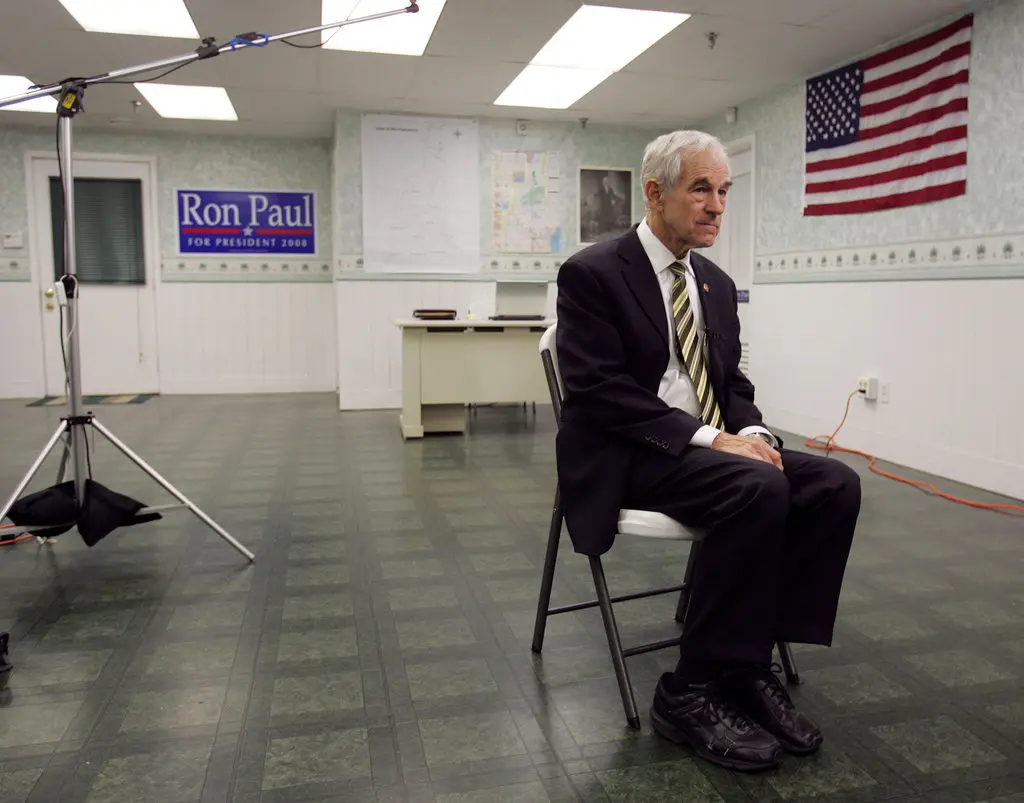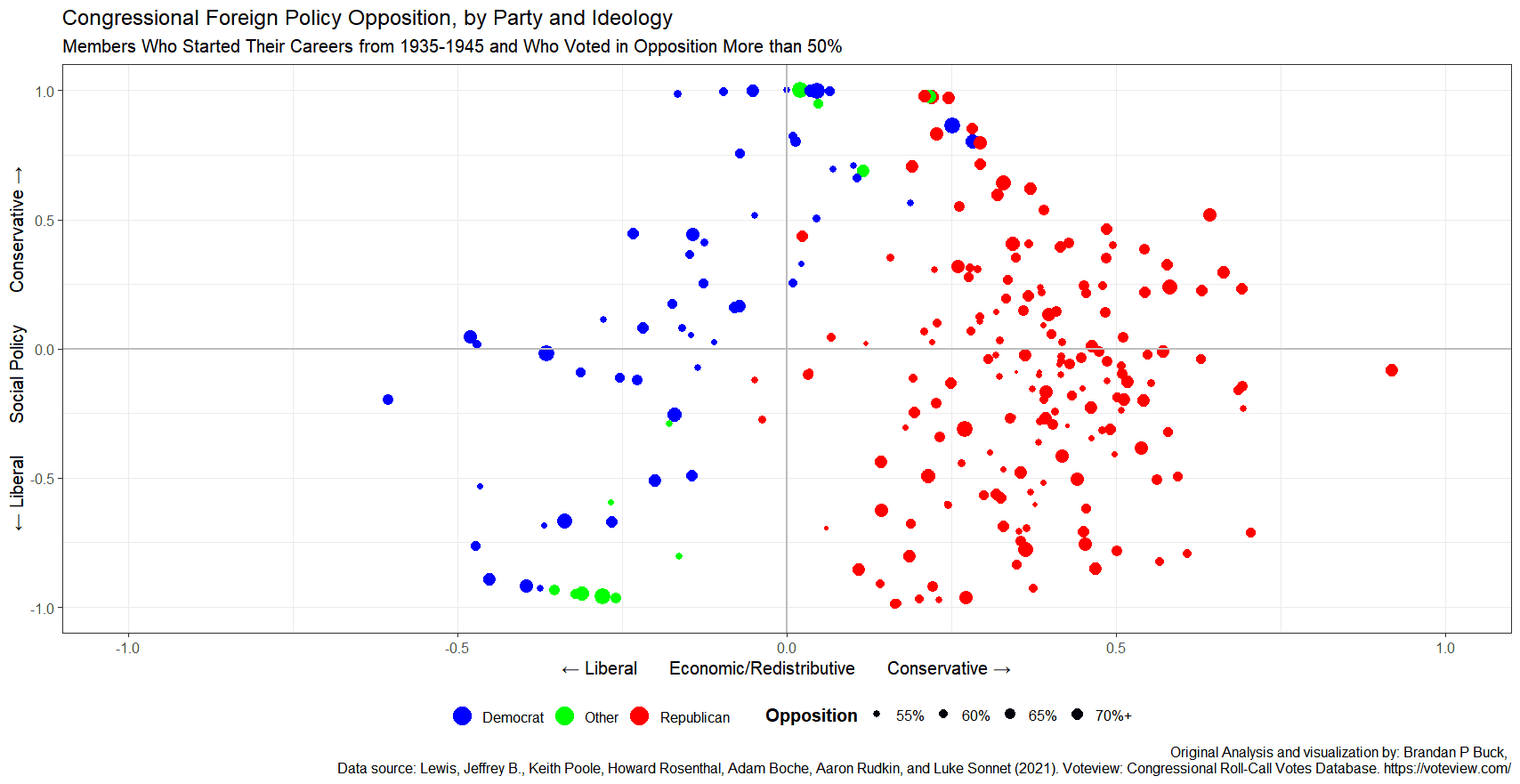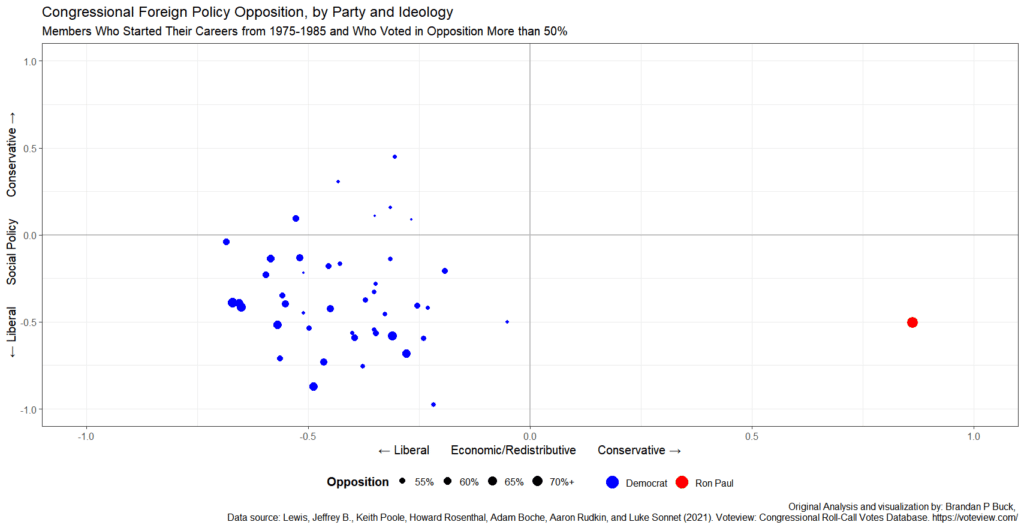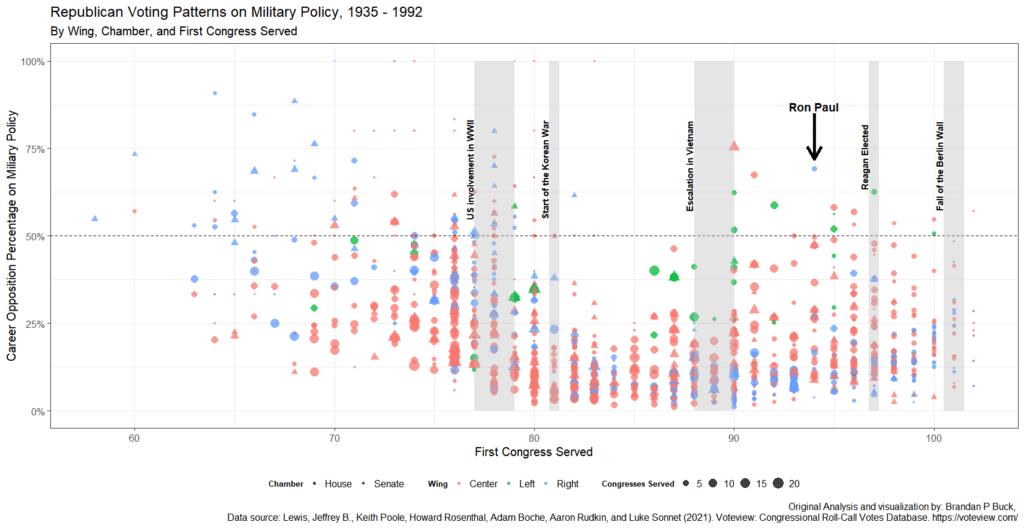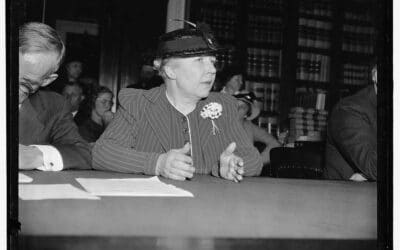In 2022, the ideological landscape of American foreign policy opposition is the most dynamic and diverse it has been in over eight decades. This newfound disorder is especially true for the right, as a new crop of libertarian-leaning and populist Republicans are challenging fundamental precepts of America’s mission in the world. For those who know their foreign policy history or are old enough to remember the Cold War, this represents a sea change in the American right.
While the right has a long history of “isolationism,” that tradition of foreign policy restraint waned for much of the early Cold War. Caught under political pressure, generational turnover, and internal tension between anticommunism and restraint, right-wing noninterventionism effectively vanished from the GOP by the early 1970s. And it is in that vacuum that Ron Paul began his congressional career in 1975.
When Ron Paul launched his political career in the 94th Congress, he was a man after his time. With the retirement of Iowa Congressman H.R. Gross, the last of the so-called “Old Right” departed office. In their place arose the “New Right,” a new generation of conservatives more aligned with the goals of the Cold War and the technocratic liberal vision which undergirded them. During his first two stints in Congress (1975-1977 and 1979-1985), Paul served as the lone voice of right-wing opposition to U.S. foreign policy and act as a bridge between an earlier era of ubiquitous right-wing foreign policy restraint and our current era of debate and disorder.
Paul’s unique opposition can be measured and displayed using computational analysis of congressional voting records on diplomatic and military policy. This article will use computational methods on a corpus of congressional roll call votes compiled from UCLA’s Voteview database. The dataset used for this article is comprised of 3,680 votes associated with U.S. foreign aid, diplomacy, and military policy from 1935 until 1992.
Each roll call was coded into one of three categories, foreign aid, diplomatic policy, or military policy. To evaluate changing attitudes on U.S. foreign policy I generated percentages of opposition to roll call votes for parties, wings, chambers, and individuals. Statistics were generated per congress or over the course of an individual career. To generate these statistics, I divided the number of noninterventionist votes by the total vote. Running these basic statistics reveals that Paul’s voting career on U.S. foreign policy was truly unique for his time.
Of all 473 Representatives or Senators who began their careers between 1975 and 1985, Ron Paul posted the highest career opposition to U.S. foreign policy, at 72.8%. Of the 202 Republicans, his next highest competitor was Claudine Schneider (RI-2), a liberal GOPer who voted in opposition a relatively lower 47% (see Table 1).
Paul’s uniqueness was especially stark given his generation (Silent, born 1935) and ideology (libertarianism). The 35 right-wing Republicans of the Silent generation who began their careers between 1975 to 1985 averaged a career opposition percentage of a mere 29.4%.
| Name | Wing | Opposition Percentage | Generation | Chamber | State |
| PAUL, Ronald Ernest | Right | 72.8% | Silent | House | TX |
| SCHNEIDER, Claudine | Left | 47.3% | Boomer | House | RI |
| LEACH, James Albert Smith | Center | 45.2% | Silent | House | IA |
| CAPUTO, Bruce Faulkner | Center | 44.9% | Silent | House | NY |
| TAUKE, Thomas Joseph | Center | 43.4% | Boomer | House | IA |
| EVANS, Thomas Cooper | Center | 43.1% | Greatest | House | IA |
| KELLY, Richard | Right | 42.8% | Greatest | House | FL |
| ATKINSON, Eugene Vincent | Center | 42.5% | Greatest | House | PA |
| CRANE, Daniel Bever | Right | 42.4% | Silent | House | IL |
| SENSENBRENNER, Frank James Jr. | Right | 41.8% | Silent | House | WI |
Table 1: This table shows the ten rank Republicans by opposition percentage to U.S. foreign policy who began their careers between 1975 and 1985. Paul ranked number one, with an opposition percentage of 72.8%.
During the height of the Cold War’s re-escalation, he was the sole right-wing Republican consistently in opposition to the excesses of U.S. foreign policy. By the mid-1970s, the poles of opposition to U.S. foreign policy flipped. This seismic change in the ideological polarity of opposition effectively broke the political continuity of the interventionist right…save for the presence of Ron Paul. In this new political landscape, he was essentially on his own. Plotting Paul alongside his Democratic colleagues who posted similar opposition from 1975 to 1985, his political loneliness becomes clear (figures 1 and 2).
Figure 1: These two graphics compare the ideological landscapes of congressional opposition to U.S. foreign policy between those who began their careers between 1935 and 1945 (above) and those who started their careers between 1975 and 1985 (below). Each dot represents a House member or Senator who voted in opposition more than 50%. Each member is located on a two-dimensional political axis. The x-axis depicts a member’s position on economic policy, with further to the left, the more liberal, and the further right, more conservative. The y-axis represents a member’s social policy position, the lower their position, the more liberal, the higher, the more conservative. Each member is colored by their party, red for Republican, blue for Democrat. Each member is sized by their career opposition percentage. The ideological landscape of congressional opposition to US foreign policy from 1935 until 1945 was ideologically and politically varied. While the GOP was the primary party of opposition a number of Democrats and members of other political parties recorded significant opposition.
Figure 2: By the time Ron Paul began his career, the ideological diversity of foreign police opposition had all but disappeared. Opposition to U.S. foreign policy became associated with the Democratic Party and particularly it’s left wing. Paul was the only Republican to oppose U.S. foreign policy more than 50% of the time during his first two stints in Congress (1975-1977, 1979-1985).
The uniqueness of his voting record on military policy is even starker given his generation, party affiliation, and ideology. While 41 Democrats posted higher military policy opposition than Paul (see below), his 69% opposition percentage was the highest in the GOP. And while several leftwing and centrist Republicans resisted the excesses of the military-industrial complex, his was the only right-wing Republican who posted significant opposition. Paul’s closet competitor on the Republican right, Jim Sensenbrenner, voted in opposition to defense policy only 39% of the time.
Paul’s position as a right-wing opponent of excessive defense spending was unique among his peers and generationally out of place. While earlier generations of right-wing Republicans opposed U.S. defense budgets, the draft, and other programs, such figures were exceeding rare after WWII. Until Paul, the last right-wing Republican to fight defense policy was Senator William Langer (ND, 51% opposition), who left Congress in 1959. Again, Paul was on his own in advocating for defense restraint from a uniquely right-wing or libertarian perspective.
Figure 3: This graphic depicts the generational voting patterns on defense policy for the Republican party. Each dot represents a Republican Senator or House member as indicated by shape. Each dot is colored by the member’s wing, green for the left, red for centrists, and blue for those on the right. Each member is located on an x-axis that shows their first congress served, and on a y-axis depicts their career opposition to defense spending and policy (between 1935 and 1992). When Paul entered Congress in 1975, he was the first right-wing Republican to consistently oppose the excesses of defense spending in 16 years. The last such political figure, Senator Herman Welker (R-ID) began his career in 1951.
On foreign aid and diplomatic policy, Paul was similarly the sole consistent right-wing voice of restraint. On issues of foreign aid (which includes all forms of economic, military, and technical assistance) Paul posted 78% opposition, number one overall. Paul was similarly the sole consistent voice of right-wing restraint on foreign aid and diplomatic policy. Similarly, on issues of Diplomatic policy (defense pacts, economic arrangements, overseas military deployments), led the oppositional pack and posted with 72%.
He opposed U.S. covert operations in Nicaragua. He voted against military assistance to El Salvador. He sought to limit the presence of U.S. troops in Central America and fought to bring American troops home from Lebanon. In all of these actions, he was among a mere handful of Republicans and still fewer who could be considered conservative or libertarian.
While some in the liberty movement view Ron Paul as a controversial figure, it is undoubtedly true that he was the single political thread that attached the Old Right to this new era of political transformation. Of the 2,404 Senators and Representatives who served between 1935 and 1992, Paul ranks #30 in all-time opposition to U.S. foreign policy. Of Republicans, he ranks #23. And of those born after 1930, he’s at the top of the hill at #1. Regardless of what some may think of his legacy, he kept the lights on for a vision of foreign policy restraint based on sound money, national sovereignty, and nonviolence. For those that desire a retrained foreign policy, regardless of ideology, that alone should warrant gratitude.
This article was originally featured at Brandan P. Buck’s blog and is reprinted with permission.


